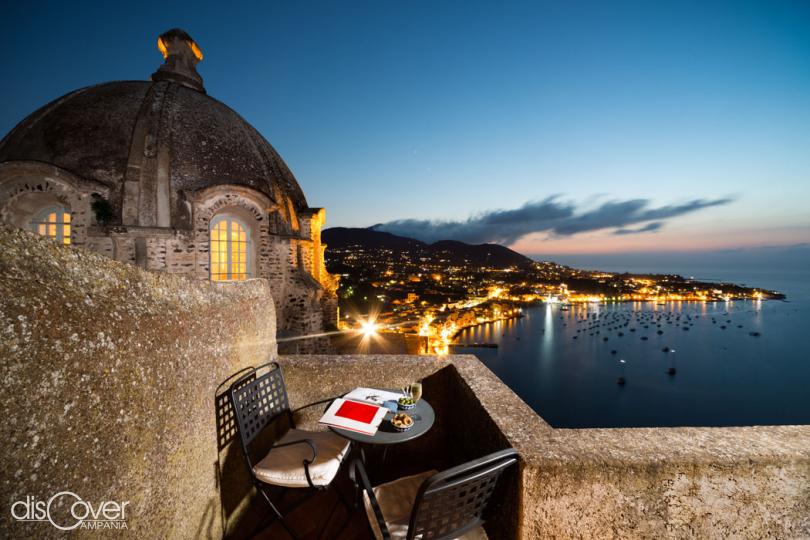In the great cathedral dedicated to Our Lady of the Assumption, for more than a century, sculpted putti observed the sumptuous religious celebrations from above. They are the survivors of a host of silent witnesses. in the mother church, the religious heart of the Aragonese Castle, which had already ceded almost all its functions and population to the big island by the time of their advent. Scattered in every corner, the plump putti represented, in those first decades of the 18th century, the new prevailing taste to which all sacred buildings on Ischia were gradually being adapted.
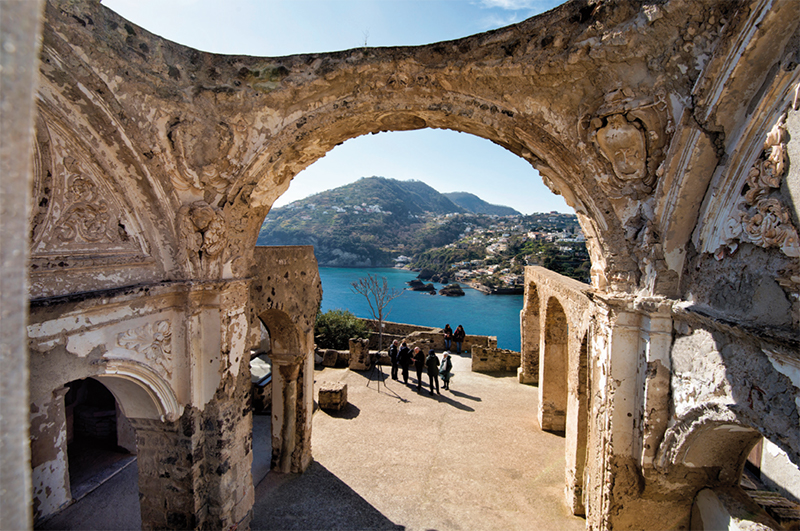
And the mother church still on the Insula Minor was no exception. At the behest of Bishop Capecelatro, almost nothing of the old had been saved to make room for the Rococo styles then in vogue. Including the stucco work introduced to embellish walls, arches and columns, entrusted to the Starace brothers, Francesco and Cesare, the cream of the capital's craftsmen on the other side of the sea, who for thirty years were assiduous on the island for work in the churches of Ischia Ponte and in Forio, Panza and Barano.
It took time to find the Staraces' 'signature' in the putti of the ancient cathedral spared by the British bombs that destroyed a large part of the temple in the summer of 1809. And so many other buildings in the fortress, which had been conquered and wounded for the first time in its history of so many sieges and so many victorious resistances. It took more than two centuries. Until restoration work began to save them from a fate that seemed already sealed.

The expert hands of the restorers took care, with all possible delicacy, to consolidate the plasterwork that was turning to dust due to continuous and prolonged exposure to the elements.
The study of the surfaces revealed in the putti a construction technique of the highest quality. The angels were modelled directly into the masonry, giving each face, under the unruly curls, the look and expression that make it unique: sullen, surprised, smiling, curious, dreamy... This is how the Staraces worked, this is their 'signature'. Also evident in the flowering branches, which have returned to their original splendour. So there was no need to reconstruct or reshape the figures with marble dust, which will only serve to preserve them in the future from the erosion suffered over the past centuries.
The work in what remains of the apse is only the most recent of the many interventions carried out in recent years on the castle, between the ancient cathedral covered only by the sky and the crypt below. By now a continuous restoration, the result of a partnership with the European Institute for Restoration, based on the fortress, with the supervision of the Superintendency and the scientific collaboration of the Opificio delle Pietre Dure in Florence. Thanks to these synergies, the ancient sacred complex has begun to tell a complex and exciting story that had fallen into oblivion for centuries.
Already, the restoration of the chapel to the left of the apse had brought to light heavy Baroque stuccoes of Spanish taste. And indicated in the last years of the 17th century the beginning of the cathedral's Baroque revolution. But the recovery of what remained of the left aisle had also revealed one of the piperno arches characteristic of the 16th-century church, and angels again, in the traces of a clearly Renaissance-style fresco. A few elements, sufficient, however, to shed light on the artistic-architectural value that the Cathedral of the Assumption must have had at the height of the splendour of the City of Ischia, faithful lookout and guardian of the gulf and, therefore, of the fate of Naples and the Aragonese kingdom.
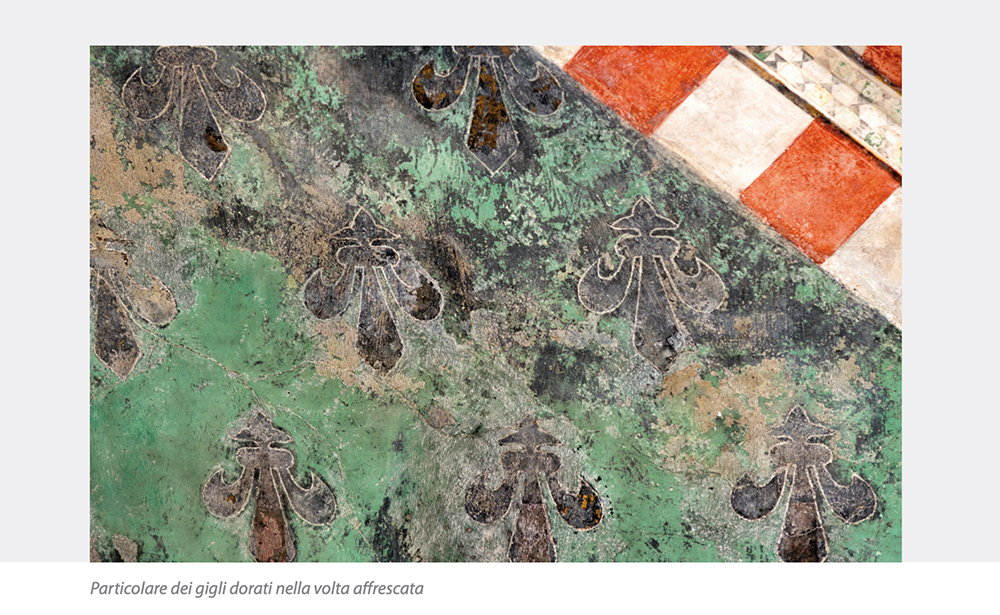
The impregnable fortress, where the governess Costanza D'Avalos and the young poetess Vittoria Colonna, animated one of the most important cultural cenacles of Italian Humanism, frequented by the greatest men of letters of the time. And under the cathedral's frescoed vaults, the wedding between Vittoria and Ferrante D'Avalos, nephew of Costanza, the first lama of the Kingdom of Naples, was celebrated on 27 December 1509, handed down in the chronicles for the pomp and illustrious presences.
Behind the piperno archway, another unknown piece of the cathedral's history emerged a few years ago. This was due to the lack of ancient plans and drawings. While carrying out preliminary essays to consolidate the vault of a small chapel that had always been closed, coloured reflections were noticed. Thus, by chance, a completely frescoed vault underneath was discovered. Once the grey 18th-century layer had been removed, part of the 14th-century church came to light, with the lilies of the House of Anjou in gold on a turquoise-green field, surrounded by red and white geometric decorations.
And underneath, wedges with frescoes of sacred figures emerged, which must have been present throughout the rest of the church in its original Angevin version.
The castle cathedral, already open for worship in 1306, in Gothic style, had only been built a few years when King Robert of Anjou visited it with Queen Sancha and a large retinue in the spring of 1309. The first sacred building was constructed after the volcanic eruption of 1301, which had depopulated the large island, in front of the fortified islet. Where the inhabitants, returning to the island after the natural event that had brusquely displaced them, had settled in large numbers, moving all the functions of the City of Ischia there. And even the cathedral, built from scratch, where the noble families living on the rock later called in the best artists active in Naples to embellish it as it deserved. And at that time in Naples, the influence of Giotto, called to Naples by Robert of Anjou in 1328, as the first court painter, for whom he worked until 1333, leaving his mark in Santa Chiara and in Castel Nuovo, where he trained numerous local artists.
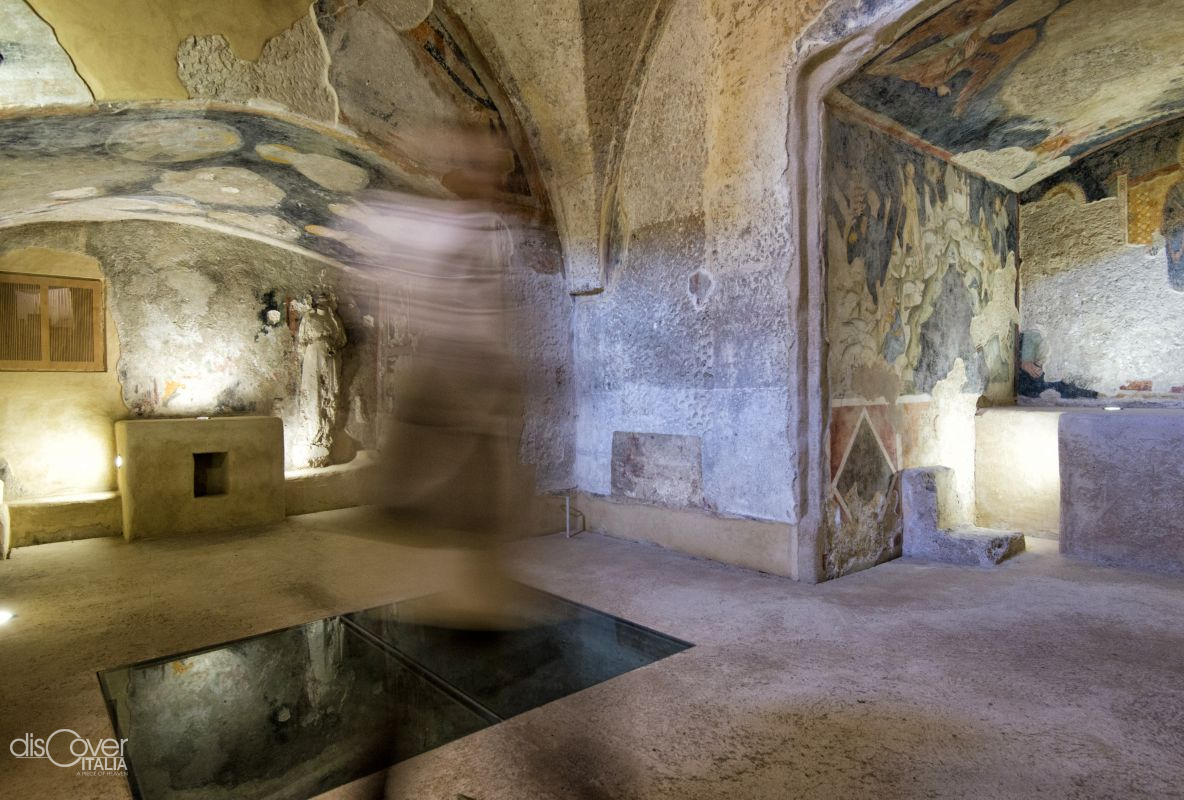
The Giottesque school is the link between the upper church and the building below, identified as the cathedral crypt, but actually a pre-existing autonomous church. And the 14th-century frescoes in the Bulgaro chapel, now fully restored, have been linked to the Giottesque artists of the Angevin court. Like the paintings in the cathedral.
Another of the crypt's secrets has already been revealed. Years ago, during the inspection of a battered wall, an underlying deposit of earth and bones was found. Upon removing the contents, painted walls surprisingly appeared: it was a hidden chapel. The restoration recovered works painted by different hands in different periods: the oldest paintings, of Byzantine influence, from the late 13th century, demonstrate a pre-existence of that place of worship to the crypt itself. While a 'Christ between the Madonna and St. John', from the 1440s, was attributed after restoration to the Master of Giovanni Barrile.
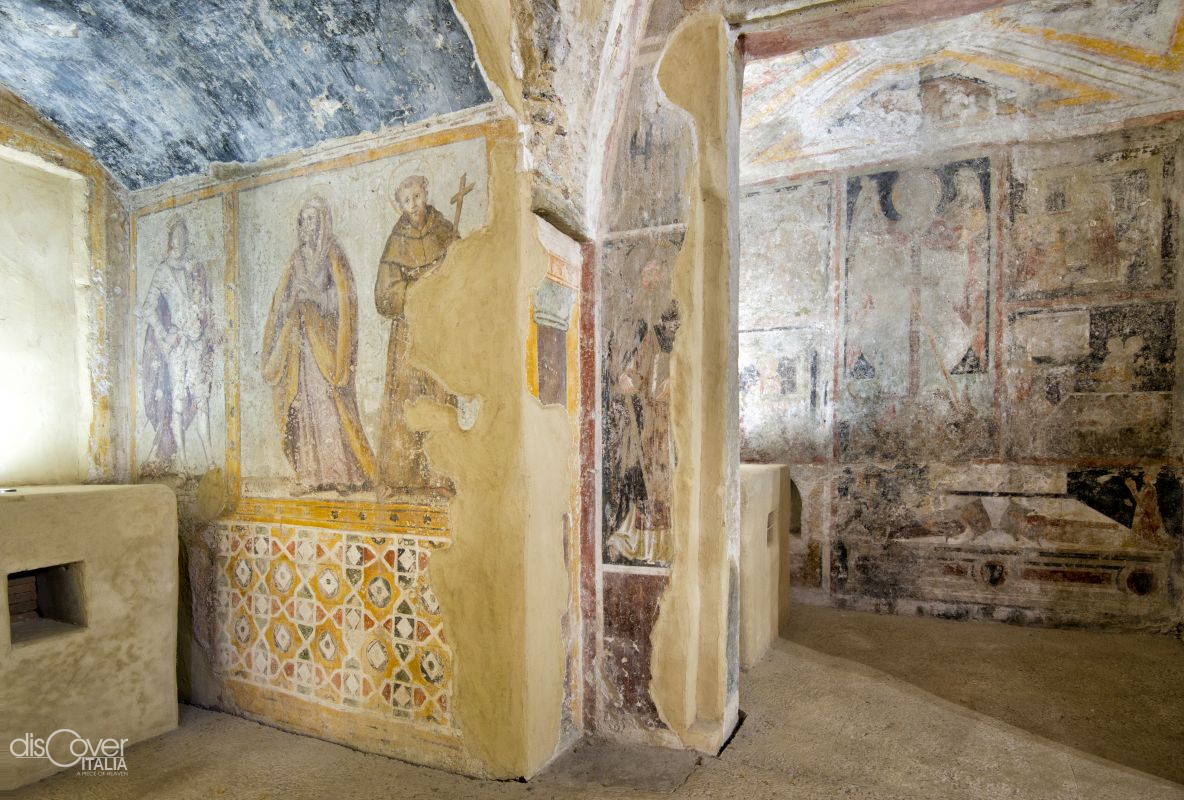 A Neapolitan, one of Giotto's most active pupils with whom he collaborated at Castel Nuovo and Santa Chiara, the Maestro is identified by the name of the Barrile chapel he painted in San Lorenzo Maggiore in Naples.
A Neapolitan, one of Giotto's most active pupils with whom he collaborated at Castel Nuovo and Santa Chiara, the Maestro is identified by the name of the Barrile chapel he painted in San Lorenzo Maggiore in Naples.
A thirteenth-century coat of arms has allowed the ownership of the ancient chapel to be attributed with certainty to the Calosirto family, who in 1654 gave birth to the Ischian saint, Giovan Giuseppe della Croce.
Behind the stone wall of the Baroque apse is a cavity. There are plans to test what lies behind it. The surprises among the astonishing ruins of the cathedral may not be over...
The Aragonese Castle is open seven days a week, all year round, from 9.00 am until sunset.
CLICK HERE AND BUY YOUR TICKET TO VISIT THE CASTLE





